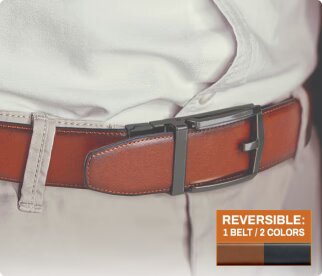Leather belts are not just functional accessories; they are also fashion statements that can elevate any outfit. This article explores the various aspects of leather belts, including their types, benefits, styles, and care tips.
Understanding Leather Belts
Leather belts come in various styles, sizes, and materials, making them a versatile accessory for both men and women. The primary purpose of a belt is to hold up pants or skirts, but they also serve as a fashion statement. Leather belts are known for their durability and timeless appeal, making them a staple in many wardrobes.
Types of Leather Used in Belts
Different types of leather are used to make belts, each with unique properties. Full-grain leather is the highest quality, featuring natural imperfections that add character. Top-grain leather is slightly more processed, offering a smoother finish while retaining strength. Bonded leather consists of scraps that are bonded together, making it less durable but more affordable. Each type has its pros and cons, catering to different budgets and preferences.
The Benefits of Wearing Leather Belts
Leather belts offer several advantages, including durability, style, and comfort. Unlike synthetic materials, leather ages beautifully, developing a unique patina over time. They are also versatile enough to complement both casual and formal outfits. Additionally, leather belts can provide better support for heavier pants, making them practical for everyday wear.
How to Choose the Right Leather Belt
Selecting the perfect leather belt involves considering factors like size, width, and style. A good rule of thumb is to choose a belt that is 1-2 inches larger than your waist size. The width should match the type of pants you’re wearing; wider belts are generally better for casual styles, while narrower belts suit formal attire. Lastly, consider the belt’s buckle style, as this can influence the overall look.
Popular Styles of Leather Belts
Leather belts come in various styles, including dress belts, casual belts, and braided belts. Dress belts are typically thinner and feature sleek buckles, making them ideal for formal occasions. Casual belts are usually wider and can have more intricate designs, perfect for everyday wear. Braided belts offer a more relaxed look and can be easily adjusted for comfort.

Leather Belt Colors and Finishes
Leather belts are available in various colors and finishes, from classic black and brown to more adventurous shades like navy or olive green. The finish can also vary, with options like matte, glossy, or distressed. Choosing the right color and finish can significantly enhance your overall outfit, making it essential to select a belt that complements your style.
Caring for Your Leather Belt
Proper care is crucial for maintaining the quality of your leather belt. Regular cleaning with a soft cloth can help remove dust and dirt. For more stubborn stains, a damp cloth and mild soap can do the trick. Conditioning your leather belt with a specialized leather conditioner will keep it supple and prevent cracking. Always store your belt in a cool, dry place to avoid moisture damage.
Common Leather Belt Sizes
Understanding leather belt sizes is essential for finding the perfect fit. Most belts are measured in inches and typically range from 30 to 56 inches. It’s important to measure your waist correctly and consider the style of the belt when choosing a size. For example, some belts have more holes, allowing for more adjustability.
The History of Leather Belts
Leather belts have a rich history that dates back to ancient civilizations. Initially used for practical purposes, they evolved into fashionable accessories over the centuries. In the Middle Ages, belts were often adorned with intricate designs, reflecting the wearer’s status. Today, leather belts continue to be a symbol of style and sophistication.
Leather Belts in Fashion Trends
Leather belts have remained a constant in the fashion world, adapting to various trends over the years. Currently, oversized belts and statement buckles are in vogue, allowing individuals to express their personality through accessories. Additionally, eco-friendly leather options are gaining popularity, appealing to environmentally conscious consumers.
The Environmental Impact of Leather Production
While leather is a natural material, its production can have significant environmental effects. The tanning process often involves harmful chemicals, which can contribute to pollution if not managed properly. However, many brands are now adopting more sustainable practices, such as vegetable tanning and sourcing leather from ethical suppliers.
Customizing Your Leather Belt
Personalization is a growing trend in fashion, and leather belts are no exception. Many brands offer customization options, allowing you to choose the color, width, and even the type of buckle. Some companies even provide engraving services, making it easy to add a personal touch to your belt.

Where to Buy Quality Leather Belts
When looking to purchase a quality leather belt, it’s essential to choose reputable retailers. Specialty leather stores often provide a wider selection and higher quality than general department stores. Online shopping also offers a range of options, but be sure to read reviews and check return policies before making a purchase.
FAQs
What is the best way to clean a leather belt?
To clean a leather belt, use a soft cloth to wipe off dust and dirt. For tougher stains, dampen the cloth with mild soap and water, then gently scrub the affected area.
How do I know if my leather belt is the right size?
A good fit is generally a belt that is 1-2 inches larger than your waist size. Measure your waist accurately and try on different sizes if possible to find the best fit.
Can leather belts be repaired?
Yes, many leather belts can be repaired. Small scratches and scuffs can often be buffed out, while damaged buckles can be replaced. Professional leather repair services can fix more extensive damage.
How long do leather belts last?
With proper care, a quality leather belt can last for many years, even decades. Regular cleaning and conditioning will help extend its lifespan.
What is the difference between full-grain and top-grain leather?
Full-grain leather is made from the top layer of hide, retaining its natural imperfections and strength. Top-grain leather is sanded and treated for a smoother finish, making it slightly less durable but more aesthetically appealing.

